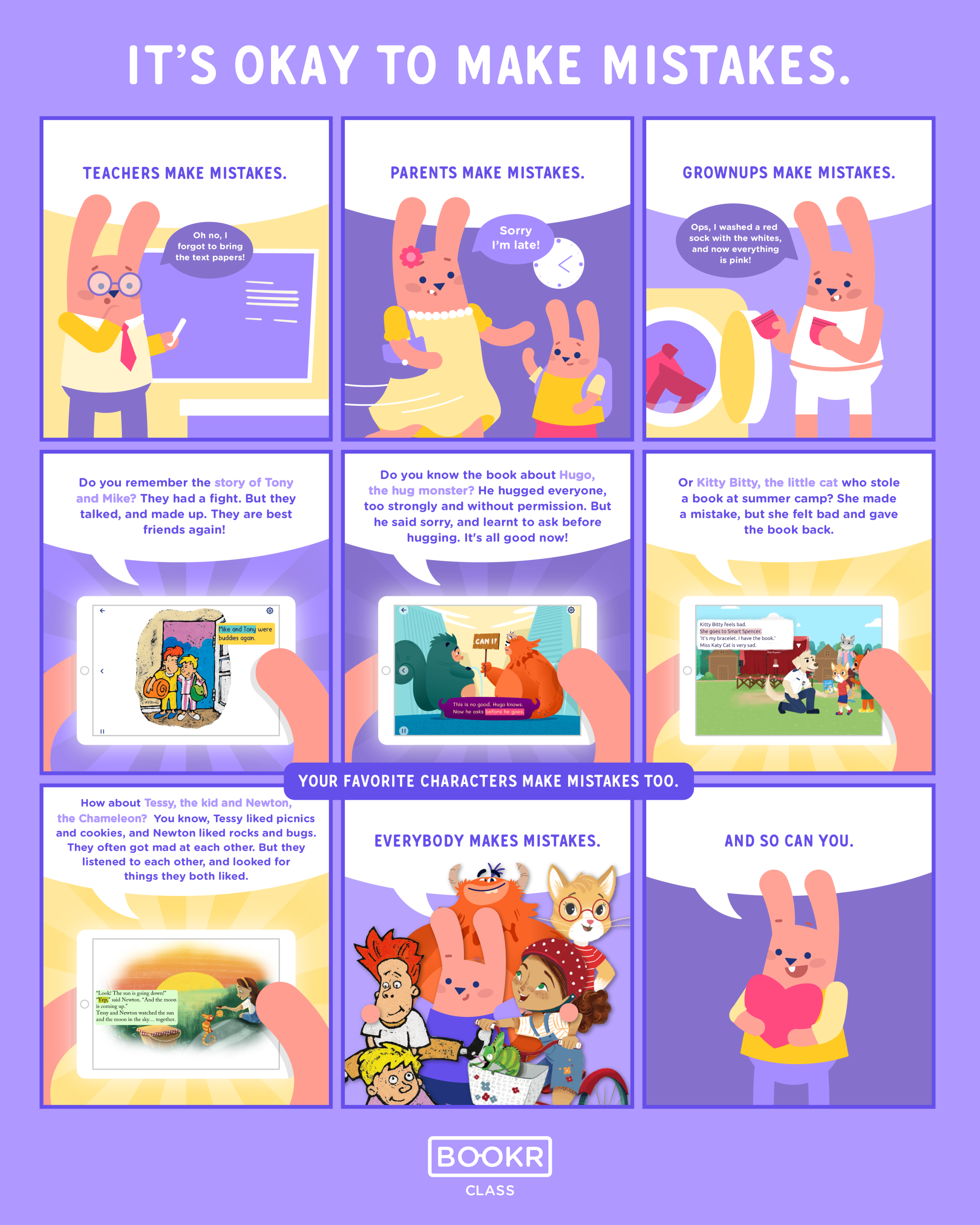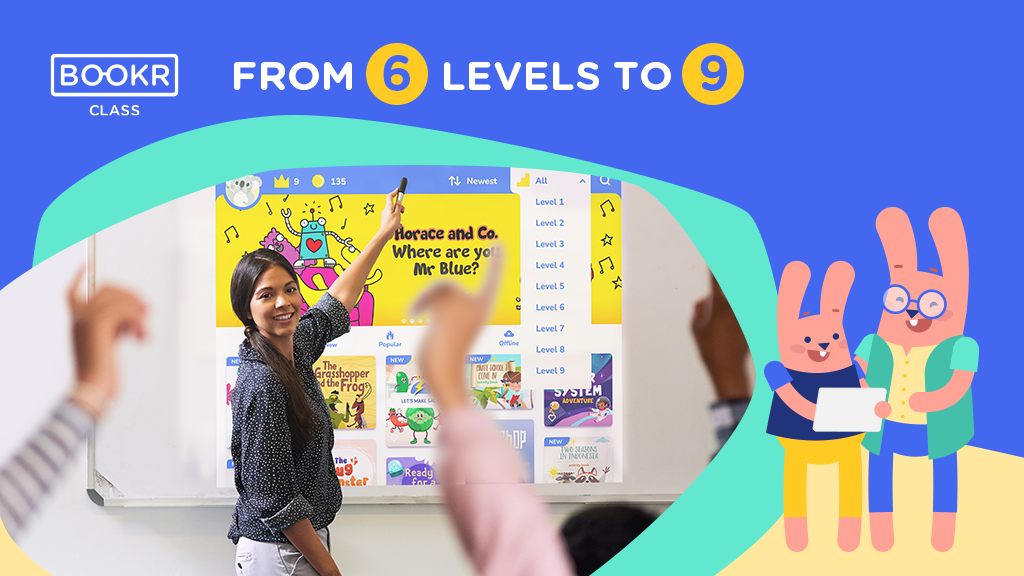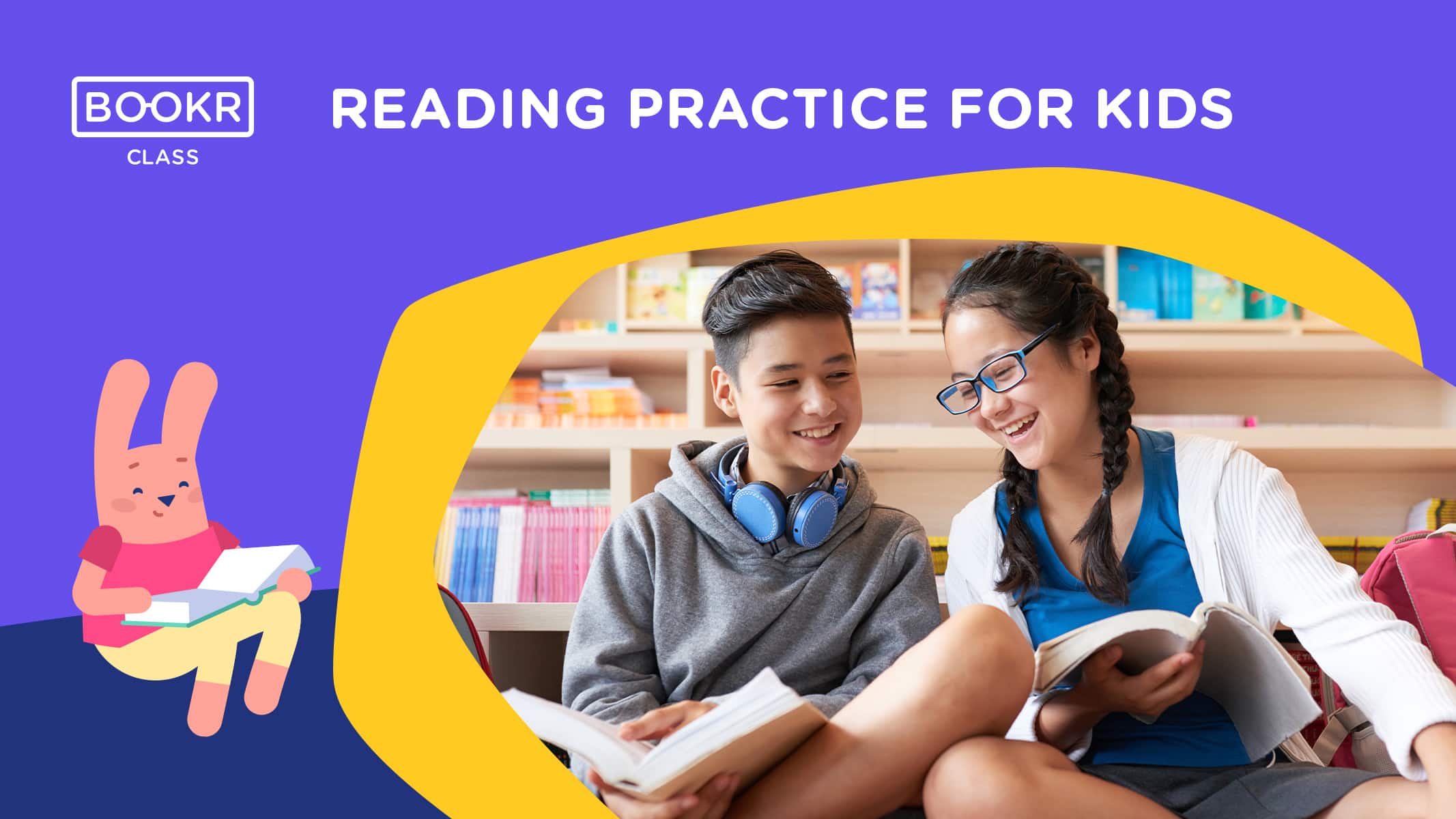The importance of children’s mental health in 2023
Each year May is dedicated to Mental Health Awareness across the globe. Its goal is to establish the importance of mental health practices and promote ways to improve them – while improving our quality of life at the same time.
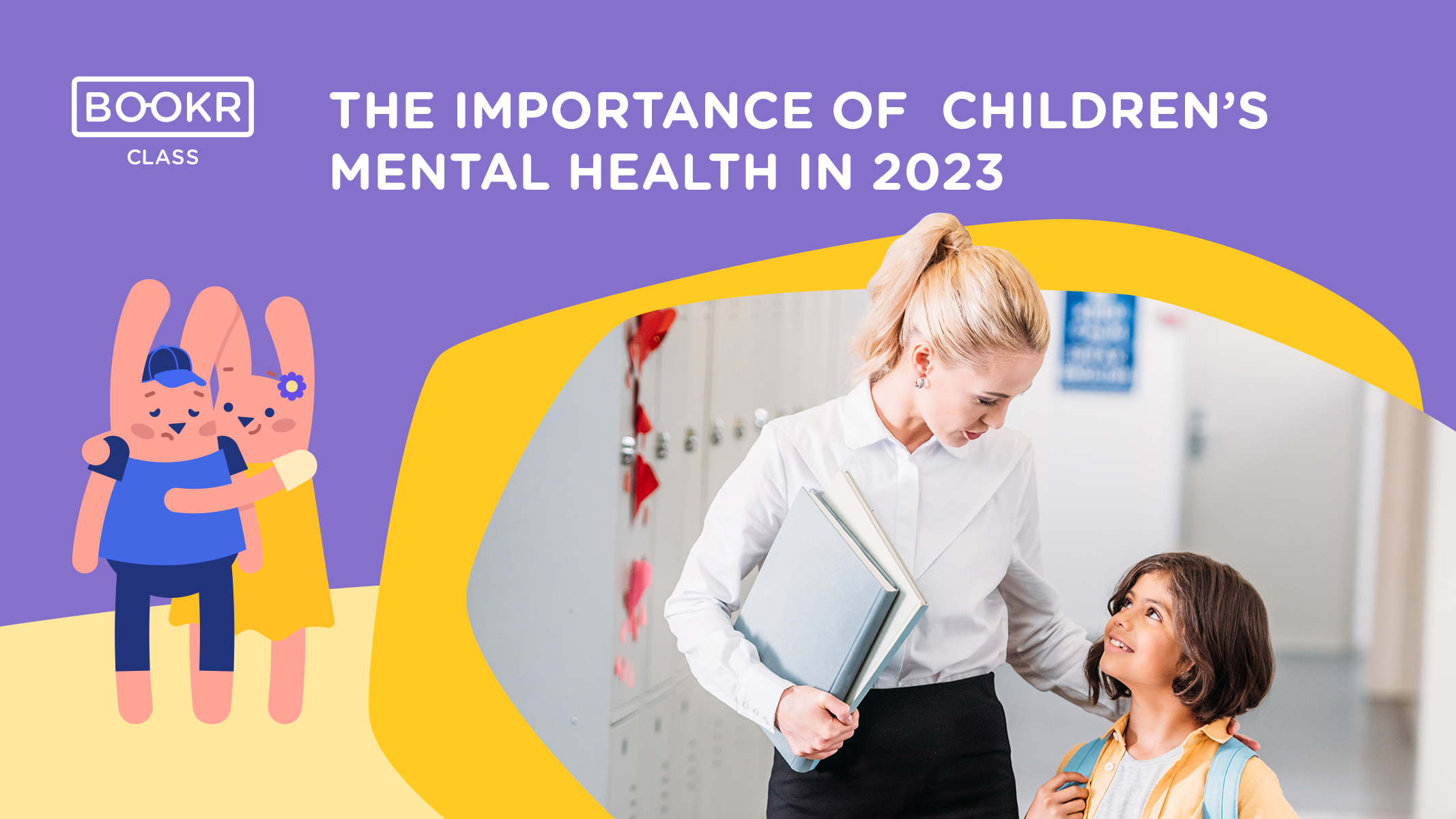
Table of content
Mental health, however, by nature, is like improving one’s flexibility. You can increase it as an adult, work hard and consistently to master the perfect split but you most likely won’t be able to compete with athletes who have been working on their flexibility since they were four.
It is very similar to habits and practices of mental health – start working on it in time, and your students or children have a much easier task managing their emotions as an adult.
What is mental health?
What do we mean exactly, when we say mental health? Well, mental health refers to our emotional, psychological, and social well-being.
It affects how we think, feel, and act, and also determines how we handle stress, build and keep relationships, and make decisions in life.
Throughout all stages of life, mental health holds significant importance, ranging from childhood and adolescence to adulthood. Any mental health issues experienced during your lifetime could potentially impact your behavior, mood and thinking.
Why is Childhood mental health awareness a vital topic in 2023?
Childhood mental health awareness is inevitable to talk about in any 21st-century institution. Why?
First, mental health issues can arise in childhood and can have a significant impact on a child’s development and well-being. However, early identification and treatment of mental health problems can prevent them from becoming more severe and having long-term effects.
Second, many adult mental health disorders have their roots in childhood experiences, and early intervention can prevent these issues from worsening or becoming chronic. This is particularly important given that childhood is a critical period for brain development and early experiences can have a lasting impact on a child’s mental health.
Raising awareness of childhood mental health issues can also help reduce the stigma associated with mental illness and promote more understanding and support for children and families dealing with these issues.
And finally, mental health awareness month is not just about treating mental disorders or preventing them. It is also about learning to be emotionally aware and dealing with everyday challanges at more ease. Self-care is essential – regardless of age and situation.
How to improve the mental health of students?
It all starts at home, but teaching mental health in school cannot be avoided.

Because improving the mental health of students is not ‘only’ crucial for their overall well-being, but for their academic success as well.
Teachers play an important role in creating a positive and supportive learning environment that fosters mental health.
If you are an educator looking for ideas to pay more attention to mental health awareness, this quick guideline was made for you.
How can a teacher improve their pupil’s mental health?
Teachers should make sure their classroom is a safe and welcoming space for all students.
As an educator, you can encourage students to express themselves and their feelings without fear of judgment. Promote inclusivity and respect for diversity in their classrooms!
Teachers can teach their students coping skills such as mindfulness, deep breathing, and positive self-talk. These skills can help students manage stress and anxiety and improve their overall mental health.
So many books are available that can help you introduce these topics, read on for the full list.
Physical activity is known to improve mental health by reducing stress and anxiety. Teachers can encourage their students to participate in physical activities such as sports, dancing, or yoga.
It’s okay if you’re not a dance teacher – it’s all about creativity and fun. Find ways to bring these playful elements into your English or Maths classes and do a favor to your kinesthetic learners by creating a little routine to memorize vocabulary or maths theories.
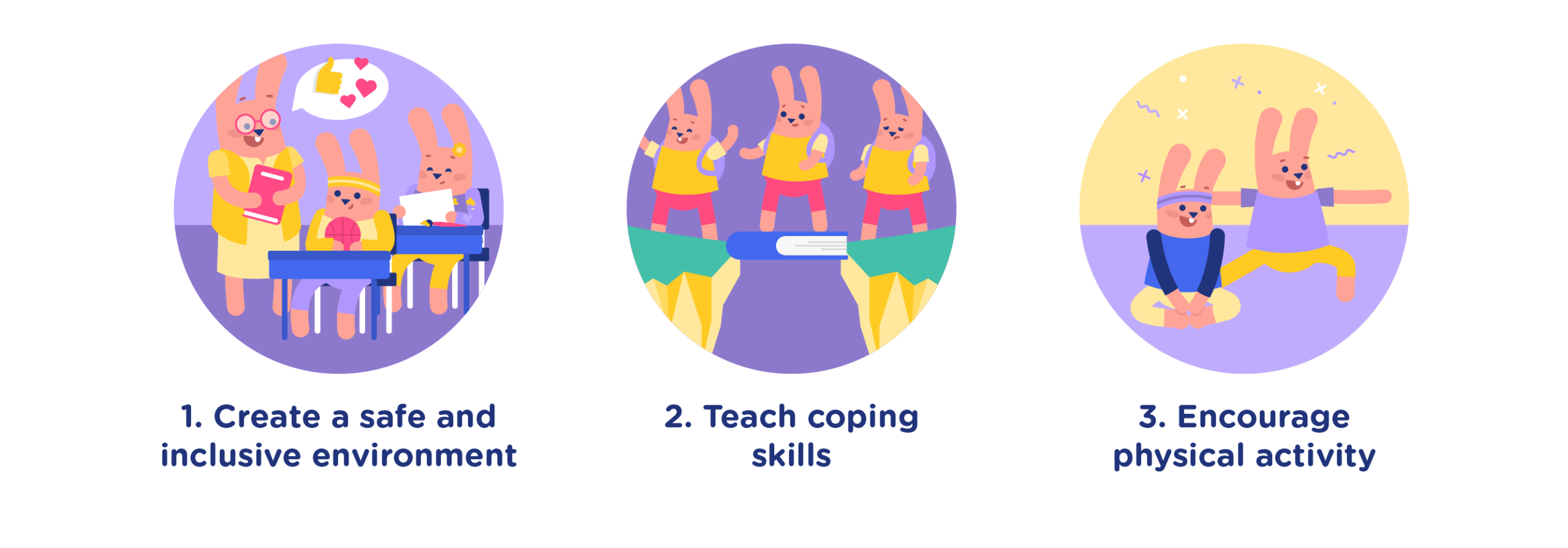
Teachers can create a supportive network for their students by connecting them with school counselors, mental health professionals, or community resources.
You can also encourage students to build positive relationships with their peers, there are great resources available in form of books or worksheets.
While as an educator you are not required to possess the abilities and knowledge of a professional psychiatrist, you should be aware of mental health issues that can affect students, such as anxiety, depression, and ADHD.
Your role here is to recognize the signs and symptoms of these conditions and provide appropriate support and resources.
High academic pressure can have a negative impact on students’ mental health. You can reduce academic pressure by setting realistic expectations, providing support, and encouraging students to take breaks and practice self-care.

How to help students with mental health issues?
In addition to these tips and tricks, it is essential to have mental health programs in schools.
These can help students with mental health issues by providing them with the necessary support and resources, and they can include counseling services, mental health education, and support groups.
Mental disorders such as anxiety and depression can also affect decision-making abilities, concentration at class, mood and overall performance. Teachers should be aware of these disorders and provide appropriate support to students who may be struggling with them.
Consult your school about the programs available and the policy to follow. Don’t be afraid to ask questions! Suggest starting mental health programs in school!
Seek out your school’s counsel and be prepared to notice if a student shows early signs of any issues. We’ve gathered some of the most common disorders children could face and the most basic early symptoms that could raise suspicion:
Anxiety disorders

Depression

ADHD
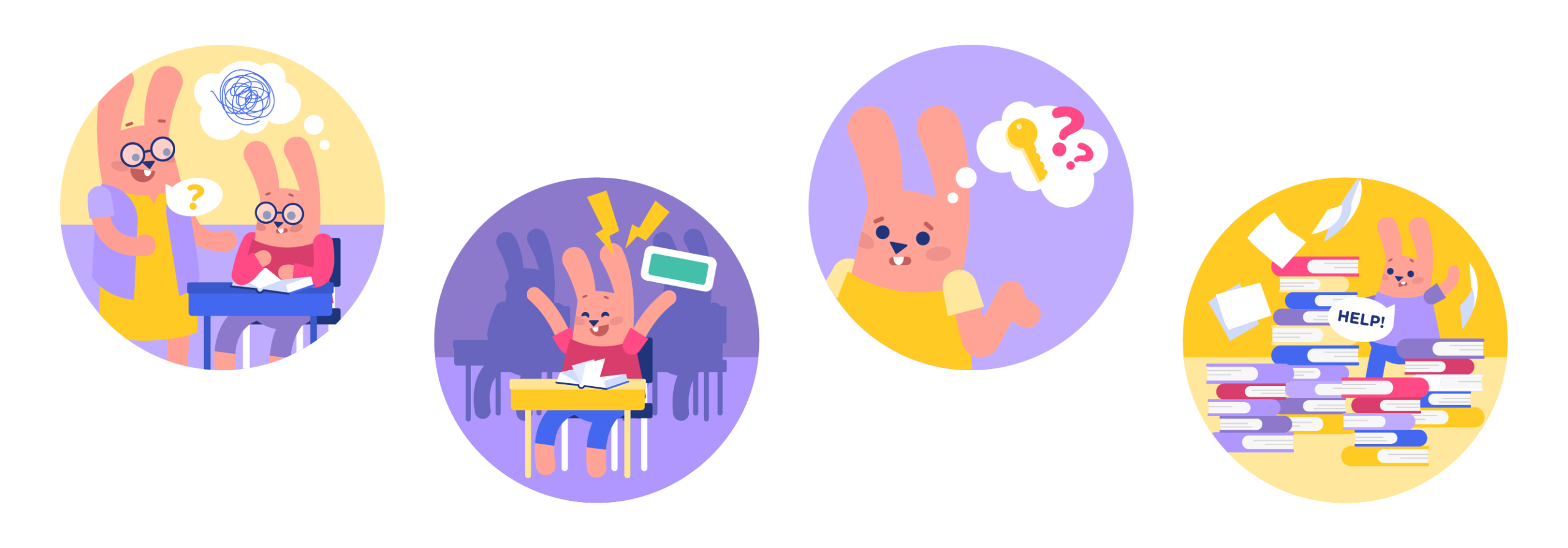
Social-emotional learning (SEL) skills involve cultivating the ability to comprehend and manage our emotions, establish positive relationships, develop empathy for others, set and achieve goals, and just feel good about ourselves in general.
Even though SEL is not a new concept, there are so many questions that are still left unanswered.
While you think that social-emotional learning is related to how we connect in our social sphere and manage and understand our emotions, it’s so much more. 5 components form the basis of SEL.
Amongst these five, Self-awareness is the core. This refers to the ability to recognize and comprehend emotions, thoughts, values and ultimately, how they affect behavior.
As our behavior and the decisions that we make basically compose all aspects of our lives, this means that social-emotional learning can really change the world. This is what mental health awareness month aims to achieve. Get more tips for SEL at home from this article.

Teaching mental health in schools is an essential component of SEL programs.
Mental health education in schools can take many forms, such as classroom lessons, workshops, guest speakers or other events unwrapping the topic. These programs can help students – and teachers! – learn about mental health in a safe and supportive environment.
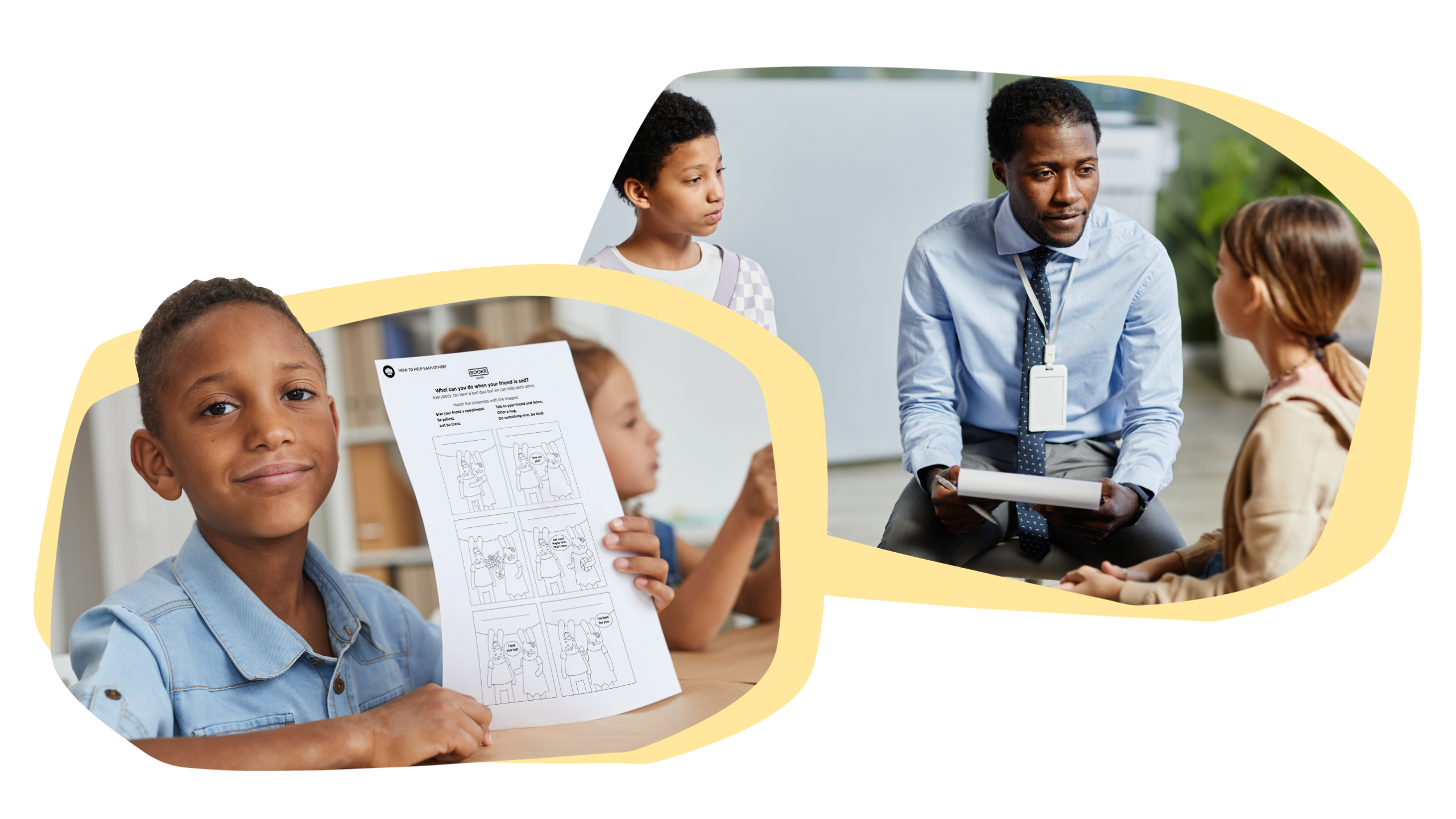
They can also provide students with the tools and resources to take care of their mental health and support their peers who may be struggling.
If you don’t have the means to make these a reality in your school just yet, there are baby steps you can take, and they are threefold:
Read.
Listen and discuss.
Be the role model.
Reading and mental health
While it is often thought of as a leisurely activity, mental health benefits of reading could surprise you.
How does reading help your mental health?
Reading can help reduce stress by allowing the reader to escape into a different world and forget about their problems for a while.
Research has shown that just six minutes of reading can reduce stress levels by up to 68%. Well sign me up!
Reading can improve cognitive function by keeping the brain active and engaged. It can also improve memory, focus, and concentration.
Reading can enhance empathy by allowing the reader to experience the lives and perspectives of different characters. This can help develop emotional intelligence and increase understanding and compassion for others.

Reading can provide a sense of community by allowing readers to connect with others who share their interests. This can help reduce feelings of isolation and loneliness.
Reading before bed can improve sleep by relaxing the mind and reducing stress levels. This can lead to better quality sleep and improved overall well-being.
Reading can be beneficial for those struggling with mental health disorders such as anxiety and depression. It can provide a healthy distraction and escape negative thoughts and emotions.
Read more about making reading a habit on this detailed article tackling each and every question you may have regarding.
Children's mental health book
There are many stories specifically designed to introduce and discuss some of the mental health topics in an age-appropriate way.
At BOOKR Class stories and hand picked and selected by educiational experts and psychologist to ensure children become familiar with concept such as relaxation for example.
The collection of our book recommendations

Start a conversation to support your students’ mental health
As easy and obvious as it may seem – talking is the key.
Regular check-ins with students is a great practical implementation of mental health awareness support.
Try to get a glimpse into how their students are doing, this will help the little ones to not only build more of a connection with students, but also to understand your students’ behaviors and participation efforts more holistically.
It can foster a sense of solidarity among students, as they realize that not all of their peers are as flawless and they might not be doing as great themselves, as they may seem. This realization could provide a sense of relief for students and hopefully encourage them to seek assistance if necessary.
Introduce Feeling Fridays once a month, and let your students share what’s going on in their lives in a playful way. Try this printable worksheet on one of your Friday sessions and talk about what the little ones can do to support each other on a bad day.
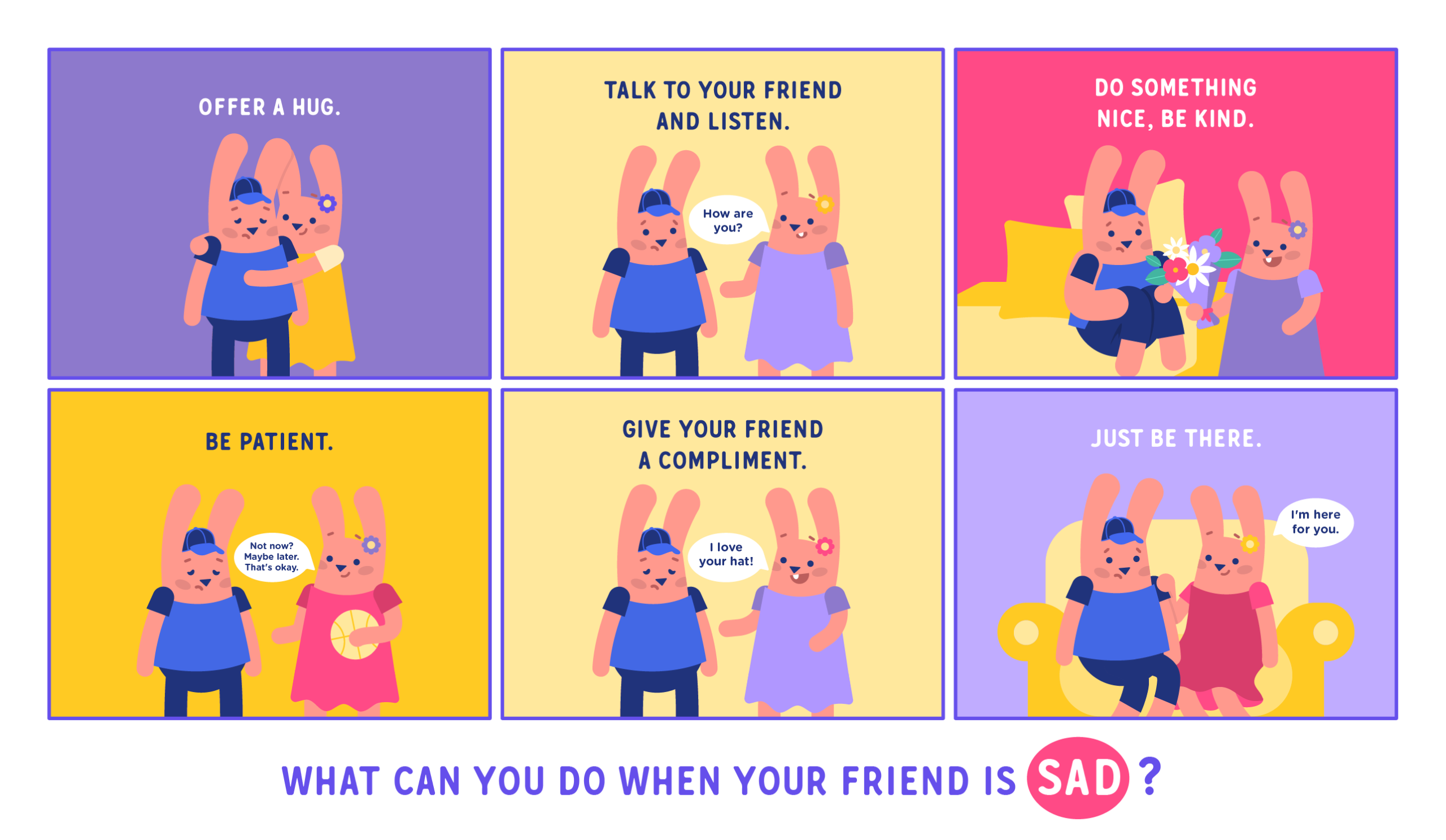
Be the change you want to see
Your students look at you as role models. Whether you are an educator or a school administrator, students’ faith is quite literally in your hands. Although you want your students to respect you and your work, you can be genuine and humane with them at times.
Show them that it’s okay to make a mistake, one does not have to be perfect to be great at what they do. This will make them relate to you even more and will free them from unrealistic expectations about themselves.
Introduce the topics through stories, or just by hanging this visual in the classroom and discussing the topic. Students might share their experiences, the times they made a mistake. What a great way to create a classroom environment full of acceptance, sense of community and love.
